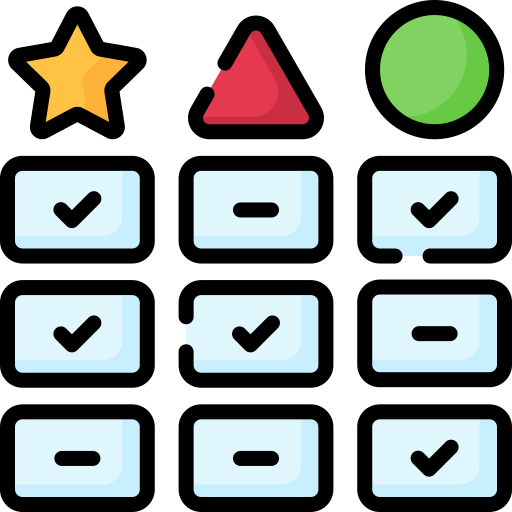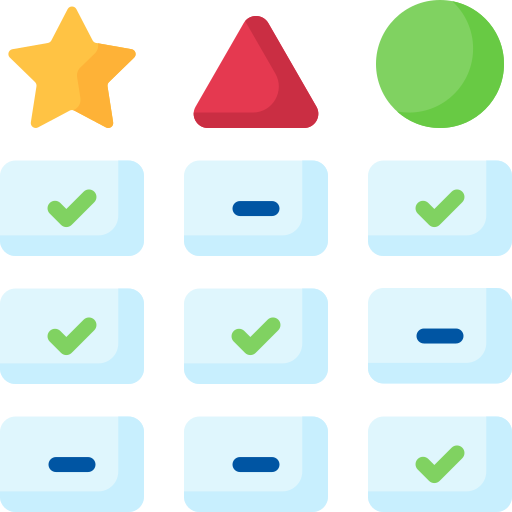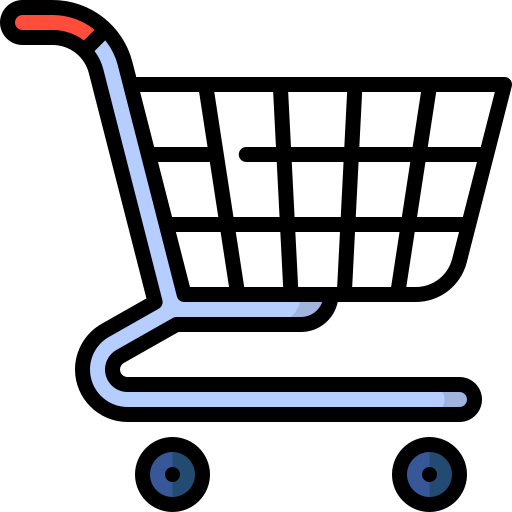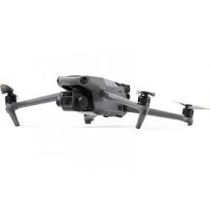
21 Verified Hands-On Reviews
To combat fake reviews we only accept video reviews from verified channels. Each review must show the product and the face of the reviewer.
Expert reviews [21]
- with a score: 10
- without a score: 11
| Highest score by Pocket-lint |
90
|
| Average score based on 21 reviews |
85
|
| Lowest score by WIRED |
80
|
Score distribution:
| 80-100 |
|
| 60-80 |
|
| 40-60 |
|
| 20-40 |
|
| 0-20 |
|




Expert consensus
The DJI Mavic 3 is a highly praised drone that offers exceptional camera quality, impressive video capabilities, an extended flight time, strong range and signal strength, effective obstacle avoidance, and excellent portability, making it suitable for a wide range of professional applications.
The DJI Mavic 3 is a highly praised drone that offers exceptional camera quality, impressive video capabilities, an extended flight time, strong range and signal strength, effective obstacle avoidance, and excellent portability. The camera features a 20MP Four Thirds CMOS sensor and a 12MP 1/2-inch sensor, providing high-resolution still images and videos up to 5.
1K at 50 fps. The larger sensor size improves image quality, dynamic range, and noise handling. The 3-axis mechanical gimbal ensures smooth and stable footage, even in challenging conditions. The drone's video capabilities include versatile frame rates, a wide-angle lens for a first-person view experience, and a video transmission range of up to 15 kilometers.
The extended flight time of up to 46 minutes allows for efficient and productive use in various professional applications. The range and signal strength are strong, maintaining a reliable connection even in challenging environments. The comprehensive obstacle avoidance system with advanced technology ensures safe and convenient flights, with a range of up to 200 meters.
The drone's portability is highly praised, with a folding design that makes it easy to carry in a backpack or camera bag. Overall, the DJI Mavic 3 is suitable for aerial photography, videography, exploration, surveying, mapping, search and rescue operations, inspections, and travel photography and videography.
Camera Quality
The DJI Mavic 3 offers exceptional camera quality with a 20MP primary camera, 12MP secondary camera, larger sensor size, and advanced image stabilization, making it a top choice for drone photography and videography.
Based on expert reviews, the DJI Mavic 3 offers exceptional camera quality. The main camera features a 20MP Four Thirds CMOS sensor, while the secondary camera has a 12MP 1/2-inch sensor. The primary camera can capture still images at 20 megapixels and record videos at resolutions up to 5.
1K at 50 frames per second. The secondary camera offers a digital zoom capacity of up to 28x, allowing for detailed shots from a distance.
The Mavic 3's camera is equipped with a 4/3-inch sensor, which is larger than the previous Mavic 2 Pro model. This larger sensor size provides higher dynamic range, better signal-to-noise ratio, and improved image quality. It allows for better noise handling, richer detail, greater dynamic range, reduced diffraction, and better control over depth of field.
The camera's image stabilization capabilities are highly praised. The 3-axis mechanical gimbal ensures smooth and stable footage, even during high-speed flights or windy conditions. The gimbal reduces unwanted camera movements and vibrations, resulting in clear and sharp images and videos.
The combination of the gimbal and advanced stabilization algorithms provides impressive image stabilization, contributing to the overall image and video quality.
Overall, the DJI Mavic 3 offers professional-quality camera capabilities, making it suitable for various use cases such as aerial photography, videography, and capturing detailed shots from a distance. The camera's high resolution, larger sensor size, and excellent image stabilization make it a top choice for enthusiasts and professionals in the drone photography and videography industry.
What is the resolution of the camera of the DJI Mavic 3?
Based on 15 quotes from 11 sources [show quotes and sources]
What is the sensor size of the camera of the DJI Mavic 3?
Based on 18 quotes from 15 sources [show quotes and sources]
What are the image stabilization capabilities of the camera of the DJI Mavic 3?
Based on 12 quotes from 10 sources [show quotes and sources]
Is there a gimbal available for the DJI Mavic 3?
Based on 2 quotes from 2 sources [show quotes and sources]
Video Capabilities
The DJI Mavic 3 has received positive reviews for its impressive video capabilities, including a maximum resolution of 5.1K/50p, versatile frame rates, extended video transmission range, and immersive first-person view flight experience.
The DJI Mavic 3 has received positive reviews for its impressive video capabilities. It offers a maximum video resolution of 5. 1K/50p, which is a significant upgrade from its predecessor, the Mavic 2 Pro. The drone supports multiple frame rates, including 4K footage up to 60 fps, 120 fps for slow-motion videos in 4K, and up to 200 fps in Full HD resolution for ultra slow-motion action.
These frame rates provide flexibility for various shooting scenarios, from standard video recording to capturing high-speed action shots.
One standout feature of the Mavic 3 is its video transmission range. Equipped with DJI's O3+ transmission technology, the drone can transmit video up to 15 kilometers (9. 3 miles) in ideal conditions. This extended range offers benefits such as better signal reliability and the ability to fly behind obstacles without losing connection.
However, it is important to note that the legal limit for drone flight is typically much lower, so the Mavic 3's range exceeds regulatory restrictions in many countries.
The Mavic 3 also offers a first-person view (FPV) flight experience, thanks to its wide-angle lens with a field of view of up to 108°. This allows users to see what the drone sees in real-time through a live video feed, enhancing the immersive flying experience.
Overall, the DJI Mavic 3 is praised for its high-resolution video capabilities, versatile frame rates, impressive video transmission range, and immersive FPV flight experience. It is a suitable choice for videographers, content creators, and drone enthusiasts who require professional-grade video recording and transmission capabilities.
What is the maximum video resolution of the DJI Mavic 3?
Based on 12 quotes from 10 sources [show quotes and sources]
What frame rates are supported by the DJI Mavic 3?
Based on 9 quotes from 9 sources [show quotes and sources]
What is the video transmission range of the DJI Mavic 3?
Based on 8 quotes from 7 sources [show quotes and sources]
Does the DJI Mavic 3 offer first person view?
Based on 4 quotes from 3 sources [show quotes and sources]
Does the DJI Mavic 3 support 4K video recording?
Based on 15 quotes from 11 sources [show quotes and sources]
Flight Time
The DJI Mavic 3's maximum flight time of up to 46 minutes makes it a versatile and efficient tool for professional aerial photography, videography, surveying, search and rescue operations, and inspections.
According to expert reviews, the DJI Mavic 3 has a maximum flight time of up to 46 minutes. This extended flight time is beneficial for various use cases, such as professional aerial photography and videography, surveying and mapping, search and rescue operations, and inspections of infrastructure or large areas.
The longer flight time allows users to cover more ground and capture more footage or data in a single flight, reducing the need for frequent battery changes and maximizing productivity. However, it's important to consider factors such as wind conditions, temperature, flying mode, and camera usage, as these can affect the actual flight time experienced in real-world scenarios.
Additionally, the DJI Mavic 3's batteries are not interchangeable with the Mavic 2, so users upgrading from the Mavic 2 will need to purchase new batteries for the Mavic 3. Overall, the DJI Mavic 3's extended flight time makes it a versatile and efficient tool for a range of professional applications.
What is the maximum flight time of the DJI Mavic 3?
Based on 15 quotes from 13 sources [show quotes and sources]
How long does it take to recharge the batteries of the DJI Mavic 3?
Based on 13 quotes from 11 sources [show quotes and sources]
Are the batteries of the DJI Mavic 3 interchangeable?
Based on 2 quotes from 2 sources [show quotes and sources]
Range and Signal Strength
The DJI Mavic 3 offers strong range and signal strength, making it suitable for various aerial photography, videography, and exploration use cases.
The DJI Mavic 3 offers two remote control options: the DJI RC-N1 Remote Controller and the DJI RC Pro. The standard version comes with the RC-N1, which is comfortable to use and allows for easy switching between modes. However, it does not have external antennas and attaching a smartphone can be challenging.
The Cine version comes with the RC Pro, which features a 5. 5-inch touchscreen and advanced features. It has a range of 15km and can operate the drone for up to 3 hours. The signal strength of the Mavic 3 is praised for its strong radio signal even in the presence of interference. It maintains a reliable connection even in challenging environments.
The Mavic 3 comes with GPS, allowing for accurate positioning and navigation. Factors that can affect the control range and signal strength include radio interference, transmission technology, frequency bands, GPS connectivity, and GPS lock acquisition. Overall, the Mavic 3 offers a strong range and signal strength, making it suitable for various use cases such as aerial photography, videography, and exploration.
What are the remote control options of the _ENTITY?
Based on 6 quotes from 5 sources [show quotes and sources]
What is the maximum control range of the DJI Mavic 3?
Based on 6 quotes from 5 sources [show quotes and sources]
What do the experts say about the signal strength of the DJI Mavic 3?
Based on 2 quotes from 2 sources [show quotes and sources]
Does the DJI Mavic 3 come with GPS?
Based on 2 quotes from 2 sources [show quotes and sources]
What factors can affect the control range and signal strength of the DJI Mavic 3?
Based on 8 quotes from 7 sources [show quotes and sources]
Obstacle Avoidance
The DJI Mavic 3 is equipped with a comprehensive obstacle avoidance system that uses multiple vision sensors and advanced technology to detect and avoid obstacles from all angles, providing a high level of safety and convenience during flights.
The DJI Mavic 3 is equipped with a comprehensive obstacle avoidance system that includes multiple vision sensors and advanced technology. The drone has six fish-eye vision sensors, two wide-angle sensors, and additional sensors on the bottom, rear, front, and sides of the drone. This allows for 360-degree omnidirectional obstacle avoidance, ensuring that the drone can detect and avoid obstacles from all angles.
The obstacle avoidance system on the Mavic 3 has been praised for its effectiveness in detecting and avoiding obstacles. It uses advanced technology, such as the Advanced Pilot Assistance System (APAS) 5. 0, to autonomously plan routes and fly around obstacles. The system is capable of tracking and following subjects, even when they are moving between and behind obstacles.
The range of the obstacle avoidance system is reported to be up to 200 meters, providing ample distance for the drone to react and avoid collisions. This extended range is particularly useful when using features like the Advanced 'Return To Home' (RTH) feature, as the drone can sense obstacles in all directions and adjust its flight path accordingly.
While the obstacle avoidance system is generally robust and effective, some product reviews have mentioned that in highly complex environments, such as dense woodland, the system may cause the drone to fly erratically. In such situations, it is recommended to turn off the APAS feature for smoother flight, albeit with a higher risk of potential collisions.
Overall, the DJI Mavic 3's obstacle avoidance system is considered to be highly effective and provides a high level of safety and convenience during flights. It is suitable for a wide range of use cases, including tracking and following subjects, flying in complex environments, and ensuring a safe return to home.
What obstacle avoidance sensors are included in the DJI Mavic 3?
Based on 17 quotes from 10 sources [show quotes and sources]
What is the range and effectiveness of the obstacle avoidance system on the DJI Mavic 3?
Based on 13 quotes from 8 sources [show quotes and sources]
Does the DJI Mavic 3 have the ability to detect and avoid obstacles in all directions?
Based on 15 quotes from 10 sources [show quotes and sources]
Portability
The DJI Mavic 3 is praised for its portability and ease of transportation, with its folding design and compact size making it convenient to carry in a backpack or camera bag.
The DJI Mavic 3 is highly praised for its portability and ease of transportation. Its folding design allows it to become significantly smaller when not in use, making it easy to carry in a backpack or camera bag. The propeller arms fold inwards and open again quickly, making it convenient to set up for flight.
The drone is compact and lightweight, measuring around 3. 6 by 3. 8 by 8. 4 inches when folded and weighing about 2 pounds. It can fit in a camera bag or photo backpack, although it may need to lay flat to fit properly. The Mavic 3 also comes with a carrying case or bag that provides protection during transportation.
Overall, the DJI Mavic 3 is considered highly portable and suitable for on-the-go use, making it a great choice for travel photographers and videographers.
What are the dimensions and weight of the DJI Mavic 3?
Based on 13 quotes from 11 sources [show quotes and sources]
How easy is it to transport the DJI Mavic 3?
Based on 12 quotes from 9 sources [show quotes and sources]
Does the DJI Mavic 3 come with a carrying case or bag for easy transportation?
Based on 7 quotes from 7 sources [show quotes and sources]

Position in ranking
We maintain a monthly ranking that sums up expert recommendations for all video drones.
| Rank | Change | Price | Video Drone |
CNET
|
T3
|
Digital Camera World
|
BestReviews
|
WIRED
|
PCMag
|
Man of Many
|
Wirecutter
|
TechRadar
|
Tom's Guide
|
|---|---|---|---|---|---|---|---|---|---|---|---|---|---|
|
1
|
- | $1400 |
 DJI Mini 4 Pro
DJI Mini 4 Pro
The DJI Mini 4 Pro is a compact drone that offers exceptional camera quality, impressive video capabilities, a long flight time, a reliable signal connection, effective obstacle avoidance, and excellent portability, making it a recommended choice for those looking for a compact drone with advanced features.
|
-
|
1
|
1
|
-
|
4
|
1
|
2
|
-
|
1
|
2
|
|
2
|
- | $2199 |
 DJI Mavic 3 Pro
DJI Mavic 3 Pro
The DJI Mavic 3 Pro is a highly praised drone that offers excellent camera quality, impressive video capabilities, extended flight time, strong range and signal strength, advanced obstacle avoidance, and portability, making it a powerful and versatile tool for professional photography and videography.
|
-
|
5
|
5
|
3
|
5
|
3
|
-
|
2
|
3
|
-
|
|
3
|
- | $1099 |
 DJI Air 3
DJI Air 3
The DJI Air 3 is a highly regarded drone that offers exceptional camera quality, video capabilities, flight time, range and signal strength, obstacle avoidance, and portability, making it suitable for professional photographers and videographers.
|
-
|
-
|
2
|
-
|
1
|
2
|
-
|
1
|
-
|
-
|
|
4
|
+7 | Check price |
 DJI Air 3S
DJI Air 3S
|
-
|
-
|
-
|
-
|
-
|
-
|
1
|
-
|
4
|
1
|
|
5
|
-1 | Check price |
 Autel Evo Lite Plus
Autel Evo Lite Plus
The Autel Evo Lite Plus is a highly praised drone that offers impressive camera quality, video capabilities, flight time, range and signal strength, obstacle avoidance, and portability, making it suitable for professional-grade aerial photography and videography, as well as for travel and outdoor activities.
|
-
|
-
|
6
|
-
|
6
|
5
|
-
|
5
|
5
|
-
|
|
6
|
+1 | $1199 |
 DJI Avata 2
DJI Avata 2
|
-
|
4
|
-
|
-
|
-
|
8
|
5
|
4
|
8
|
-
|
|
7
|
+3 | $1799 |
 DJI Mavic 3 Classic
DJI Mavic 3 Classic
The DJI Mavic 3 Classic is a highly praised drone that offers excellent camera quality, impressive video capabilities, a long flight time, advanced obstacle avoidance, and portability, making it a top choice for professional videographers and photographers.
|
-
|
2
|
10
|
-
|
-
|
-
|
3
|
-
|
-
|
3
|
|
8
|
-3 | $314 |
 DJI Mini 2 SE
DJI Mini 2 SE
|
-
|
-
|
9
|
1
|
-
|
-
|
-
|
-
|
2
|
-
|
|
9
|
-3 | $419 |
 DJI Mini 3
DJI Mini 3
The DJI Mini 3 is a compact and lightweight drone with excellent camera quality and advanced stabilization features, making it ideal for adventurers and travelers who want to capture stunning aerial footage on the go.
|
-
|
-
|
4
|
-
|
-
|
4
|
-
|
3
|
-
|
4
|
|
10
|
+3 | $199 |
 DJI Neo
DJI Neo
|
-
|
-
|
-
|
-
|
-
|
7
|
4
|
-
|
11
|
5
|
|
11
|
-3 | Check price |
 Autel Evo Nano Plus
Autel Evo Nano Plus
The Autel Evo Nano Plus is a highly praised drone that offers a high-quality camera experience, impressive video capabilities, reliable flight performance, comprehensive obstacle avoidance, and excellent portability.
|
-
|
6
|
-
|
-
|
-
|
6
|
-
|
-
|
9
|
9
|
|
12
|
-3 | $399 |
 HoverAir X1
HoverAir X1
|
-
|
3
|
3
|
-
|
-
|
-
|
-
|
-
|
-
|
6
|
|
14
|
+2 | $2199 |
 DJI Mavic 3
DJI Mavic 3
The DJI Mavic 3 is a highly praised drone that offers exceptional camera quality, impressive video capabilities, an extended flight time, strong range and signal strength, effective obstacle avoidance, and excellent portability, making it suitable for a wide range of professional applications.
|
3
|
-
|
-
|
-
|
-
|
-
|
-
|
-
|
6
|
-
|
|
15
|
+2 | Check price |
 Dji Avata
Dji Avata
The DJI Avata drone is highly praised for its camera quality, video capabilities, and portability, making it a top choice for professional photographers and videographers.
|
2
|
-
|
-
|
-
|
-
|
-
|
-
|
-
|
-
|
8
|
|
16
|
+2 | Check price |
 DJI Mini 2
DJI Mini 2
The DJI Mini 2 is a highly recommended drone for capturing high-quality photos and videos, offering impressive camera quality, stable footage, long transmission range, and a compact and portable design.
|
7
|
-
|
-
|
-
|
3
|
-
|
-
|
-
|
-
|
-
|
|
17
|
+2 | $1336 |
 DJI FPV
DJI FPV
The DJI FPV drone is highly praised for its camera quality, video capabilities, flight time, range and signal strength, obstacle avoidance, and portability, making it a versatile and powerful tool for capturing stunning aerial footage.
|
4
|
-
|
-
|
-
|
-
|
-
|
-
|
-
|
-
|
7
|
|
18
|
+2 | $884 |
 DJI Air 2S
DJI Air 2S
The DJI Air 2S is a highly recommended drone for its exceptional camera quality, impressive video capabilities, reliable flight performance, and convenient portability.
|
6
|
7
|
-
|
-
|
-
|
-
|
-
|
-
|
-
|
-
|
|
19
|
-7 | Check price |
 Dji Ryze Tello
Dji Ryze Tello
The DJI Ryze Tello is a beginner-friendly drone with good camera quality and portability, making it suitable for casual photography and videography, but may not meet the needs of professional or advanced users.
|
-
|
-
|
-
|
-
|
7
|
-
|
-
|
-
|
7
|
-
|
| Show all rows | |||||||||||||







